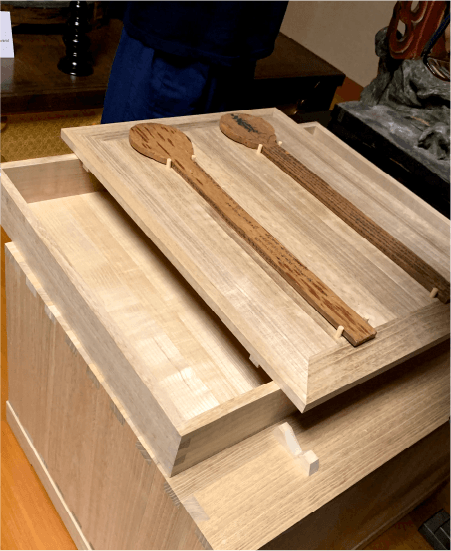About Virtual Pilgrimage


- Length of Experience:
- 60minutes
- Fee:
- 5,000yen
The 3D virtualization of the Unkei Buddha statuary at Jorakuji Temple and the VR experience we offer via VR goggles affords a special new 3D VR experience that is not possible in actual life. Once the VR experience is over, you will be able to view Unkei’s Buddha statuary in person.
* To protect the cultural properties, in the case of unfavorable weather conditions, viewing of the Buddha statues created by Unkei may not be permitted.
* In case of emergency, the event may be cancelled. In this case, we will contact you and refund the full amount.
Age Range:
The use is not allowed for children under 7 years. The use is not allowed for children between 7 and 13 years without explicit parental consent.
- Not feeling well
- Drunk or otherwise intoxicated
- Weak heart condition
- Prone to motion sickness
- Prone to dizzyness
- Lack of sleep
- Claustrophobia
- Respiratory disorders
- Prone to seizures
- High blood pressure
- Nyctophobia
- Neck, back and spinal diseases
- Sensitive skin
- Environmental hypersensitivity
- Pregnancy
Use of the VR headset:
While it's generally possible to wear VR goggles over your regular glasses, you may run into some difficulties depending on their design.
Taking off your regular glasses while putting on the VR goggles, will degrade vision.
Bifocals or contact lenses have a negative impact on your visual experience.
We are not liable for any damage to your glasses; please use the VR goggles with care.
Please inform our staff if you have any other adverse symptoms.
Depending on your hairstyle, you may not be able to properly wear the VR goggles.

What are Hostu-gan Votive Wishes/Prayers?
Hotsu-gan are votive wishes/prayers made at the temple to entrust one’s wishes to a Buddha.
In the early 12th century, a samurai warrior, Wada Yoshimori, and his wife wished for their own eternal life as well as the eternal life of their deceased subordinates and opponents in a time of war, and so they commissioned the Buddhist master sculptor monk Unkei to create statues of Amida Nyorai (Amitabha Tathagata), Fudo Myoho (Acalanātha), and Bishamonten (Vaishravana) at Joraku-ji Temple.
In response to Wada’s request, Unkei produced the five statues. And in order to ensure that his wishes come true, Unkei placed shingachi-rin or “moon halos” inside each of the statues and consecrated them with spirit to transform them into Buddhas.
In the period after Unkei, the custom of placing objects inside the statue became more widespread, and worshippers and Buddhist followers sometimes placed Buddha statuettes or their shakyo sutras inside the statues, in the hopes that the Buddhas would listen to their wishes.
Master Sculptor of Buddhist Statuary, Unkei,
and the Buddhist Statues of Jorakuji Temple
Unkei (c. 1150 - 1223) was a master sculptor of Buddhist statuary who was active from the late Heian to Kamakura periods and also served as a monk at Kofukuji Temple in Nara.
Highly regarded for his ability to sculpt robust expressions in his statues that gave them bold presence, Unkei was commissioned by nobility of different regions to create his Buddhist statuary. Not only limited to superficial realism, the presence articulated in Unkei's Buddhist statues breathed life into the statues.
Unkei created his second Buddhist statue in the Eastern provinces at the request of Wada Yoshimori, the first head of the Samurai-dokoro (Board of Retainers) during the establishment of the Kamakura Shogunate, and his wife. This is the history behind the statues enshrined at Jorakuji Temple.
The inscription on the wooden plaques in the shape of an aureola (‘lunar halo’), which can be said to be the soul of Buddha, placed inside the statuary of Jorakuji, reveals that the statues were created master sculptor of Buddhist statuary as well as a monk of Kofukuji Temple, Unkei, together with 10 other disciple sculptors.


Unkei and the Shingachi-rin (Lunar Halo)
The Moon Halo is a circle representing the full moon with a depiction of the lotus of the Pure Land Sect and a Sanskrit character representing the Buddha in the center.
It is believed that the enlightened mind is a ‘halo around the moon’ or ‘moon halo’ of the state of enlightenment and purity, and that the Buddha also has a Moon Halo in his mind, and that when it is connected to the Moon Halo of one's own mind, one can become one with the Buddha.
The wooden Moon Halo plaques that were placed inside Unkei’s Buddha statues at Joraku-ji Temple are inscribed with the date of their creation, the names giving credit to Unkei as the sculptor, and Wada Yoshimori and his wife as those offering the votive prayers they contain. Also written on the plaques are charms in the form of phrases from dharani text to enhance the power of the statues.
Unkei’s intent for placing these wooden plaques representing the Moon Halo in the center of the statues was so that the soul of the Buddha would be enshrined, making them more than mere statues—his wish was for them to become incarnations of the Buddhas themselves.
In such a way, the Moon Halo becomes the link between the Buddha and oneself, as well as the soul that is enshrined in the Buddha itself.